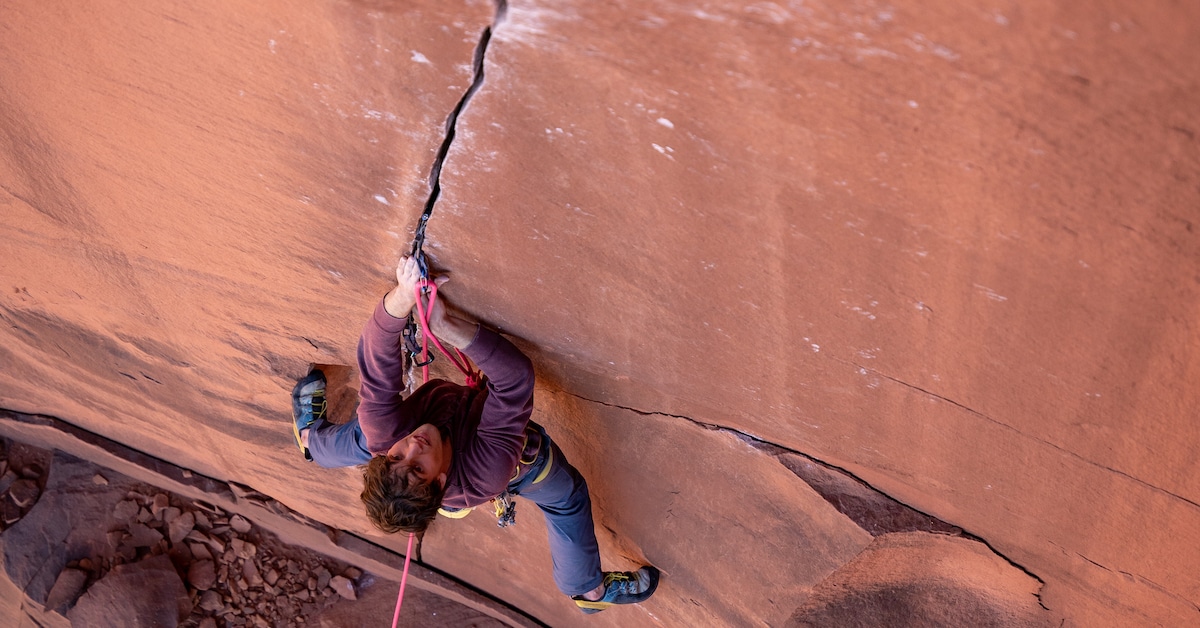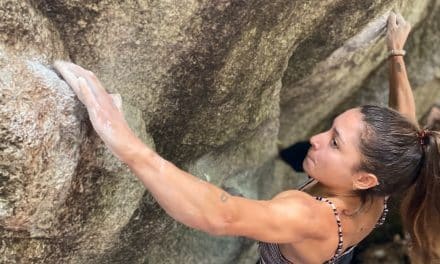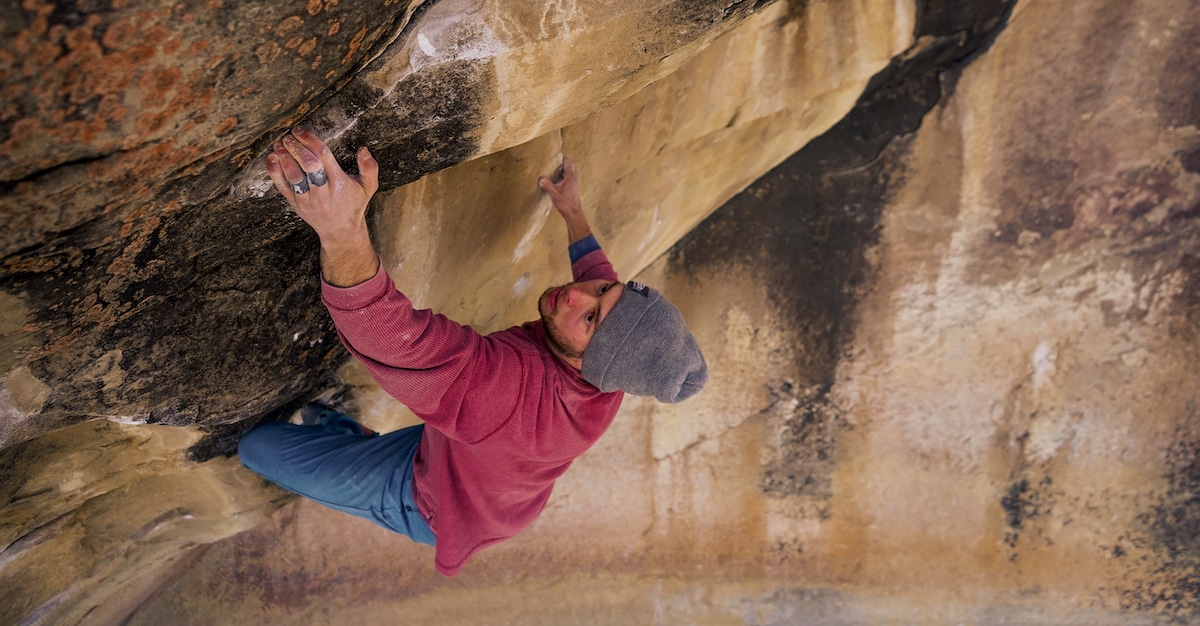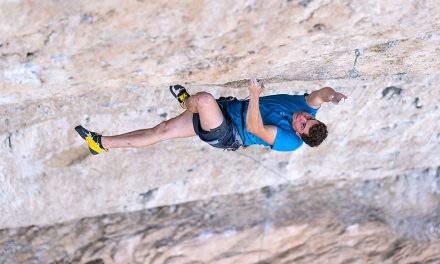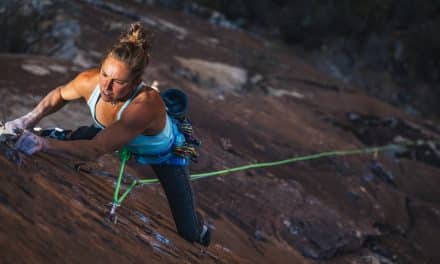Adrian Vanoni sent Cobra Crack and Prayer for a Friend, both iconic routes in the crack climbing community, back to back. Whether or not you crack climb yourself, learn how to quicken the sending process via his “hands on” projecting strategy.
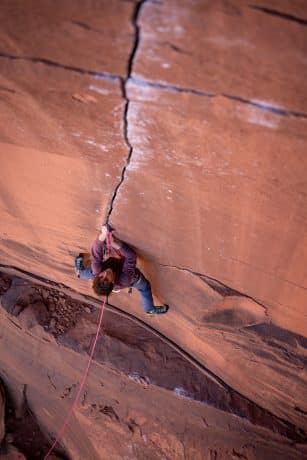
Adrian Vanoni on a previous ascent of Learning to Fly in Indian Creek.
Within a span of two weeks, Adrian Vanoni sent two of the toughest crack climbs the northwest has to offer: Cobra Crack (5.14a) in Squamish and Prayer for a Friend (5.14a) on Washington’s Prusik Peak. Either one on its own would position Vanoni among the best crack climbers in the game. But both in such quick succession eliminates any doubt.
Vanoni allowed himself to dream big in the name of these climbs, but not at the expense of plain ol’ practice. His goals on Cobra and Prayer grew out of a copious amount of experience on similar climbs. Putting in the time on surrounding routes helped him get to know the rock and anticipate the specific challenges he’d face on the harder versions.
“I’ve climbed most of the other hard finger cracks I’ve heard of,” Vanoni explains, “which gave me the confidence to try Cobra. Climbing all the other routes on Prusik Peak gave me the inspiration to try Prayer.”
Back to Basics
Vanoni continued to prioritize experience when the time came to start working on the actual routes. He tried to spend as much time as possible on each climb, building familiarity with the specific sequences.
“My training was mainly just trying to climb on the route,” Vanoni admits. “I don’t really do any specific training, honestly. I just try to climb a lot and listen to my body so I can give it the stimulus it needs for each goal.”
But that doesn’t mean Vanoni is just winging it out there. A lack of structure doesn’t equate to a lack of effort or intention. Guided by the mantra “as much as I can (without getting injured),” he racked up volume on rock as well as plastic in between crag days. He worked three days a week, resting for two of those and sandwiching his shift between double climbing sessions on the other.
On days off, Vanoni would obsess over the forecast to catch every possible weather window for time on the routes. He kept tabs on other projects at his local sport climbing crag too. A mid-season send of Lost Horizons (14b) in Little Si gave him a boost of power endurance that would help on Cobra and Prayer. “Both are pumpy climbing to a sustained power endurance crux of about 10-12 moves,” Vanoni describes, “so keeping power up was crucial, which I did by bouldering in the gym and climbing on sport projects.”
Amping It Up
He’d tack on targeted training based on the cues from his body. For example, Vanoni sensed a weakness in his core while working through Cobra. A week dedicated to ab exercises and steep bouldering led to fresh progress on the route. Fatigue in his arms at another point in the projecting process motivated him to spend his next few gym sessions on the campus board getting practice recruiting his upper body power. Intuition helped him tailor his routine to fit each climb’s unique characteristics.
Climbing is a skill sport first and foremost. Time on the wall matters more than any fancy training tool or complex workout. Vanoni’s tactics prioritized the basics for good reason. He achieved his sends through dedication to the process above all. When in doubt, follow Vanoni’s lead and stick to simplicity. Fill in any gaps with specific additions that the climb reveals in real time. Small tweaks atop a solid foundation add up to one heck of a strong pyramid—with the send waiting for you atop it all.
Related Articles:
- Climb More Creatively with Alex Megos’ Stretching Routine
- How Jordan Cannon Trained to Send the Trango Tower
- How Jonathan Siegrist Trains to Crush 5.15 Climbs
- How Matt Fultz Trains from Home for V16 Climbs
- How Tyler Thompson Masters the Art of Sending Quickly
Copyright © 2000–2023 Lucie Hanes & Eric J. Hörst | All Rights Reserved.

